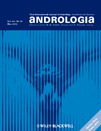Systemic and cavernous plasma levels of neuropeptide Y during sexual arousal in healthy males
The results summarised in this manuscript were presented at the 36th Joint Meeting of the Bavarian Association of Urologists and the Austrian Society for Urology and Andrology, Munich, Germany, 10–12 June 2010.
Summary
Neuropeptide Y (NPY) has been shown to induce contraction of isolated human penile erectile tissue and potentiate the response to noradrenaline. The purpose of our study was to measure in the cavernous and systemic blood of healthy male volunteers the course of NPY through different stages of sexual arousal. Whole blood was drawn simultaneously from the corpus cavernosum and the cubital vein of 16 healthy male volunteers during penile flaccidity, tumescence, rigidity and detumescence. Tumescence and erection were induced by applying audiovisual and tactile stimulation. Plasma levels of NPY (given in pmol l–1) were determined by means of an enzyme-linked immunoassay. NPY significantly decreased in the cavernous blood on sexual arousal, when the flaccid penis became tumescent and, finally, rigid (F: 88.8 ± 35.8, T: 62.4 ± 22.7, R: 62.3 ± 19.7), and only slightly rose in the phase of detumescence (64.8 ± 23). In the systemic circulation, no pronounced alterations in the concentration of NPY were registered (F: 64.4 ± 27, T: 65.8 ± 19, R: 59.6 ± 25, D: 67.6 ± 29.3). Our findings are in favour of the hypothesis that NPY could contribute to the maintenance of the resting state of cavernous smooth muscle.




